

Comfrey. Russian comfrey (Symphytum x uplandicum) Comfrey (also comphrey) is a common name for plants in the genus Symphytum.
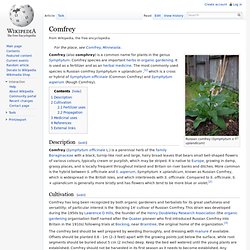
Comfrey species are important herbs in organic gardening. It is used as a fertilizer and as an herbal medicine. The most commonly used species is Russian comfrey Symphytum × uplandicum ,[1] which is a cross or hybrid of Symphytum officinale (Common Comfrey) and Symphytum asperum (Rough Comfrey). Description[edit] Cultivation[edit] Comfrey has long been recognized by both organic gardeners and herbalists for its great usefulness and versatility; of particular interest is the 'Bocking 14' cultivar of Russian Comfrey.
The comfrey bed should be well prepared by weeding thoroughly, and dressing with manure if available. Comfrey is a fast growing plant, producing huge amounts of leaf during the growing season, and hence is very nitrogen hungry. Fertilizer uses[edit] There are various ways in which comfrey can be used as a fertilizer. Propagation[edit] Medicinal uses[edit] Garden Planner: The Best Way to Plan Your Kitchen Garden. Aeroponic Growing Rings and the Teachable Moment. by Richard Gittings (deleted) Pledge $10 or more You selected 1 backer Every contribution helps!
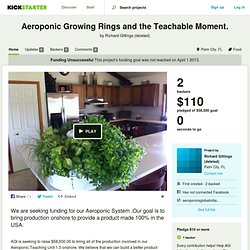
Help AGI bring its production onshore. Stay informed about our project by receiving updates on our progress. Also have your name mentioned in the Presidents Circle, a section of our website dedicated to thanking contributors, past and present. Estimated delivery: Pledge $25 or more You selected 0 backers Thank you for your support. You will receive all the previous rewards and we will send you one AGI Pen, with logo. Vertical Farm MEWU - STEM Project Based Learning Curriculum by George Irwin. Green roofs, green walls, urban agriculture, vertical and roof farms are only a sample of the current and existing trends that have established themselves as a standard in the building, design and construction industry.
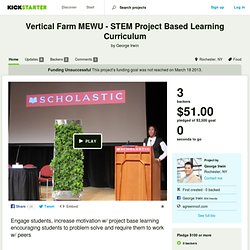
The use of the Mobile Edible Wall Unit (MEWU) is part of our Science, Technology, Engineering and Math (STEM) curriculum and provides an emphasis on engineering, design process, building awareness of and create excitement for STEM type of careers and promote engineering habits. Our 4 year pilot program from the Bronx NY has provided 100% graduation and 100% passing the NYS regents. Featured links on TED, NBC , CNN, "This is My Classroom". This single MEWU will be donated to the Rochester Early College International HS in Rochester NY for the Young Women's STEM club in hopes to spark the interest and success it experienced in the Bronx. Build Your Own - Windowfarms. New Windowfarm™ Windowfarms™ are available in One, Two, and Four-Column configurations.
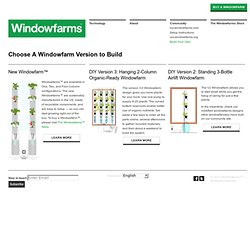
The new Windowfarms™ are sustainably manufactured in the US, made of recyclable components, and are easy to setup — so you can start growing right out of the box. To buy a Windowfarm™, please visit The Windowfarms™ Store. DIY Version 3: Hanging 2-ColumnOrganic-Ready Windowfarm The version 3.0 Windowfarm design gives you more plants for your buck. Venus fly traps - FlyTrapCare.com - Care, feeding & more. When to Plant Vegetables. Aeroponic Growing Rings and the Teachable Moment. by Richard Gittings. Vertical Farm MEWU - STEM Project Based Learning Curriculum by George Irwin. Build Your Own - Windowfarms. When To Sow & Set Out Transplants: {Reference. Here’s a handy chart to help you determine when to plant vegetables in the garden.
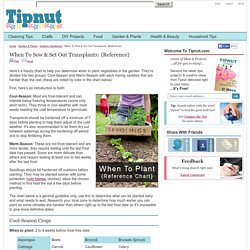
They’re divided into two groups: Cool-Season and Warm-Season with each having varieties that are hardier than the rest (these are noted by color in the chart below). First, here’s an introduction to both: Cool-Season: Most are frost-tolerant and can tolerate below freezing temperatures (some only short term). They thrive in cool weather with most seeds needing the cold temperature to germinate. Transplants should be hardened off a minimum of 7 days before planting to help them adjust to the cold weather. Warm-Season: These are not frost-tolerant and are more tender, they require waiting until the last frost date has passed.
Seedlings should be hardened off outdoors before planting. The chart below is a general guideline only, use this to determine what can be planted early and what needs to wait. Cool-Season Crops When to plant: 2 to 4 weeks before frost-free date. How to Save Heirloom Tomato Seeds.